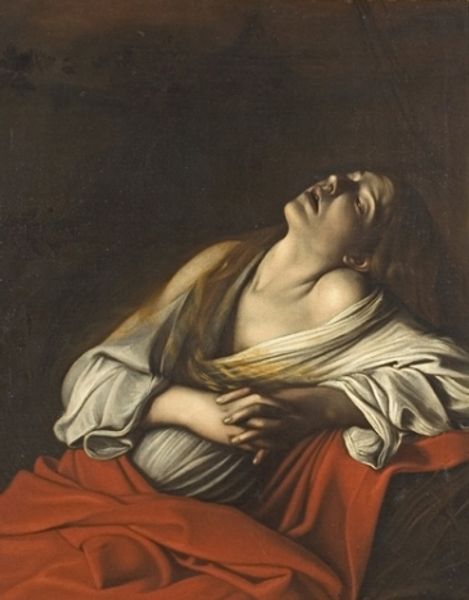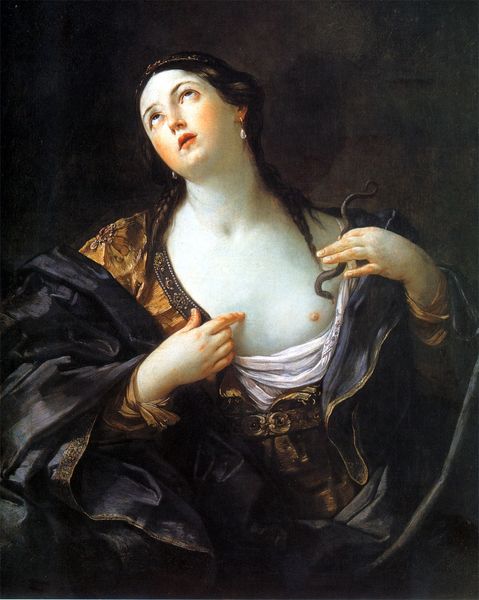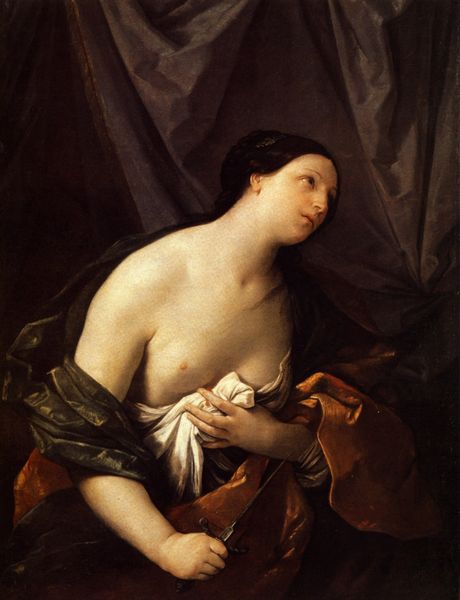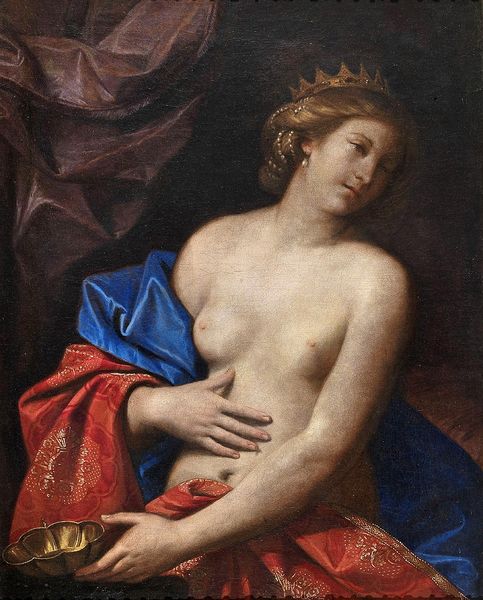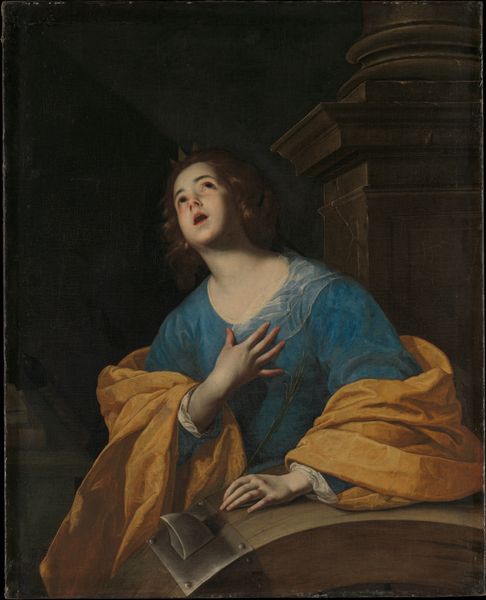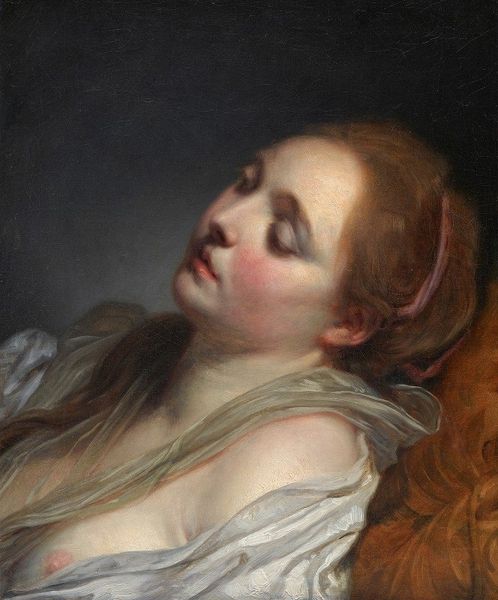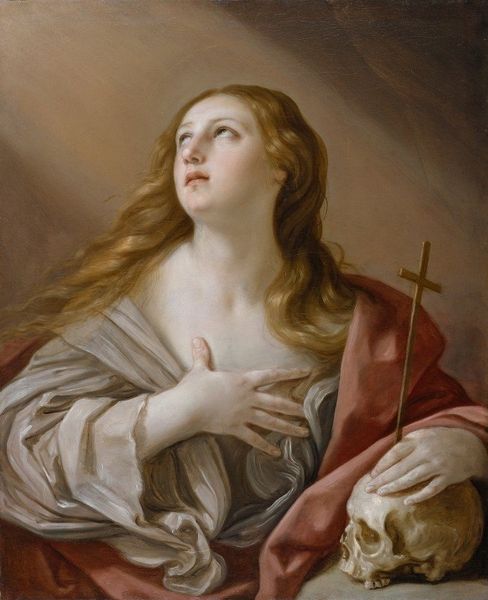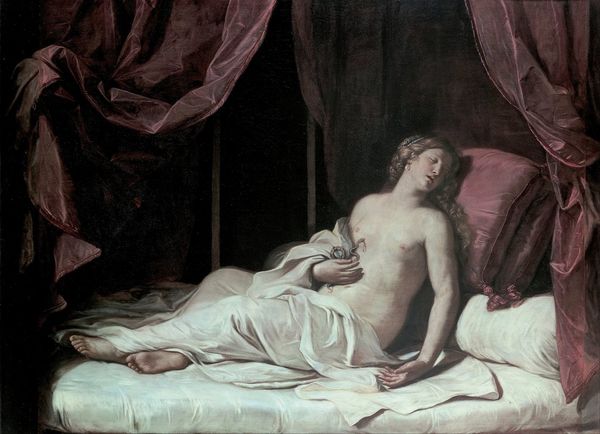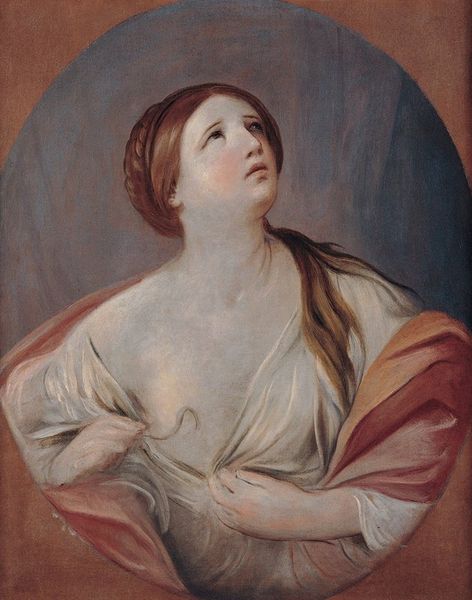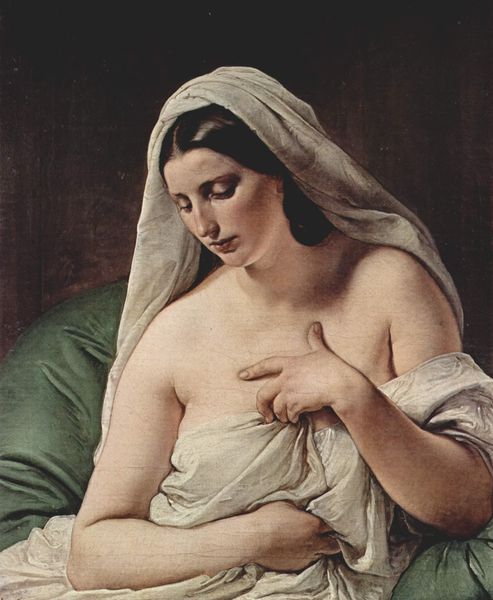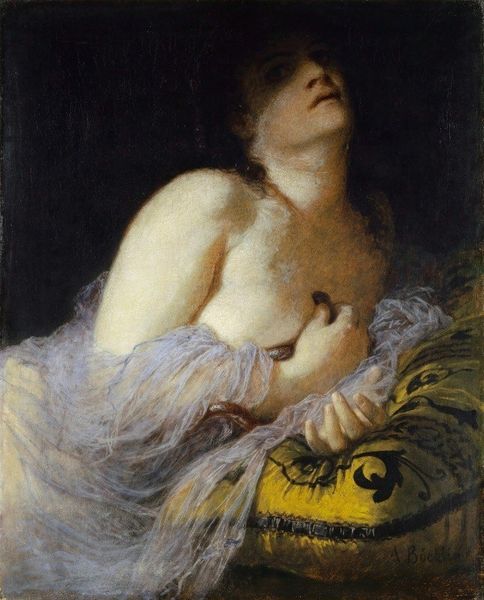
painting, oil-paint
#
portrait
#
baroque
#
painting
#
oil-paint
#
history-painting
#
italian-renaissance
#
nude
Dimensions: 95 x 95 cm
Copyright: Public domain
Curator: What a dramatic depiction of Cleopatra. Guido Reni created this oil on canvas around 1630, during the Baroque period. Editor: The tenebrism grabs you immediately, doesn't it? She’s pale, luminous, nearly dissolving into that black background. It sets such a tragic and melodramatic tone. Curator: The upturned gaze is significant, of course. In Western art, looking towards heaven usually signals piety, longing, or a seeking of divine forgiveness, particularly as one approaches death. Think of countless martydoms. Editor: And yet, there's an ambivalence here. Cleopatra was a powerful, actively ruling woman, a queen. That longing gaze can read as complex, as she perhaps contemplates a loss of power or perhaps her future legacy rather than the exclusively "devine". Her identity feels almost strategically layered. Curator: Indeed, Reni, during his career, really did want to engage viewers by portraying complex emotional states and making accessible the lives of his portrayed figures. It looks as if the asp is painted right onto her body, a union between her mortal existence and her immortal persona that she might try to cultivate for herself and leave for future generations. Editor: That intimacy with the serpent is unsettling. It challenges a passive, victimized narrative. Rather than being solely about submission to fate or divinity, it gestures toward agency, maybe even a deliberate claiming of her destiny—of political suicide—in the face of a shifting, dangerous world. Curator: Snakes often have a double valence in the history of symbols: the danger and poison alongside the possibility of medicine and immortality. Editor: It's still striking to consider how this image, crafted centuries ago, engages themes that resonate powerfully even now—representation, power, gender, agency and visibility. Curator: It definitely underscores how visual symbols persist and evolve, retaining traces of cultural memory as they acquire new layers of meaning. Editor: An important reminder that history painting, in particular, is not just history, but an active site of ideological formation.
Comments
No comments
Be the first to comment and join the conversation on the ultimate creative platform.
